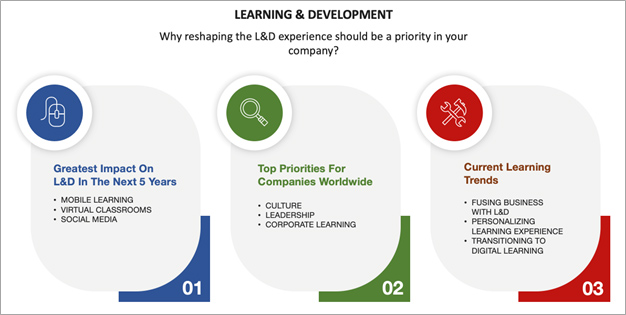Collaborative Public-Private Ecosystems: Call For Transformational Learning
A Q&A with Vinod Kumar Singh

In the new world of work, the public sector is moving from hierarchies to networks to nurture collaborative public-private ecosystems and achieve shared outcomes and growth. Employees at the core of this ecosystem need laser-sharp attention to enhance their employability and capabilities. Let us explore transformational work in talent development that illustrates the public sector's growing focus in that direction.

1. How do you determine the training needs of employees in PowerGrid?
2. What is the process for designing and implementing a training program in PowerGrid? What changes have been incorporated over the years?
Designing and implementing a training program in PowerGrid typically involves several stages, such as identifying training objectives, developing training materials, selecting training methods, delivering training, and evaluating its effectiveness. PowerGrid has incorporated changes in the training program design and methodologies, such as adopting new technologies, including experiential learning, and aligning training programs with business goals.
3. How do you measure the effectiveness of training programs regarding employee performance and productivity? Where is the ROI?
The effectiveness of training programs in terms of employee performance and productivity is measured through several metrics, such as pre-and post-training assessments, employee feedback surveys, observation of changes in job performance, and analysis of key performance indicators. The return on investment (ROI) is calculated by comparing the cost of training with the outcomes, such as increased productivity, reduced turnover, and improved customer satisfaction for highly specialized programs.
4. How do you decide which training programs are most relevant for PowerGrid?
The relevance of training programs for PowerGrid employees is decided based on the company's strategic goals, the identified skills gaps, and industry trends. The training programs are aligned with the company's business objectives and employee development needs.
5. How do you ensure the training programs align with PowerGrid's goals and objectives?
To ensure that the training programs align with PowerGrid's overall goals and objectives, the training program design is based on a needs analysis that identifies the skills and knowledge gaps that must be addressed. The training program should also be aligned with the company's values, culture, and vision.
6. What kind of budget is allocated for L&D activities in the company, and how is it determined?
The budget allocated for learning and development (L&D) activities is determined based on several factors, such as the training needs identification and skills mapping for current and future roles. Thankfully the budget is not a constraint in PowerGrid.
7. How do you encourage employees to use training and development opportunities?
To encourage employees to take advantage of training and development opportunities, PowerGrid uses several strategies, such as communicating the benefits of training, making training opportunities easily accessible, and recognizing and rewarding employees who contribute to L&D. Apart from this, we have linked Performance Appraisal System with learning needs and interventions.
8. How do you keep track of the progress of employees who have undergone training?
To keep track of the progress of employees who have undergone training, PowerGrid uses several methods, such as post-training evaluations, performance evaluations, and supervisors' feedback. Regular communication between employees and supervisors can also help track progress and identify areas requiring further development through organizational network analysis (ONA) and Training Need Analysis (TNA).
9. How do you address the challenges and barriers that may arise while implementing training programs?
Challenges and barriers that may arise during the implementation of training programs are addressed through effective planning, communication, and support. Multiple communication channels have been added for L&D interventions.
10. How do you stay current with the latest trends and best practices in L&D and incorporate them into the company's training programs?
To stay updated with the latest trends and best practices in L&D, PowerGrid uses several methods, such as attending industry-specific conferences, networking with peers, researching emerging trends, and professional development programs such as AI/ML programs through IIITB. For professional development programs, tie-up has been done with premier institutes in India.
11. What are the critical constructs essential to building a high-performance culture?
Critical constructs essential to building a high-performance culture include a strong leadership team, clear communication, a focus on results, a commitment to continuous improvement, a culture of accountability, and a culture of constant learning and development.
12. What are the essentials of empowering managers to help their teams improve and sustain high performance?
To empower managers to help their teams improve and sustain high performance, PowerGrid provides training and resources on effective leadership and management and opportunities for professional development and growth. Managers and leaders receive ongoing feedback, mentoring, and coaching to learn about performance metrics and goal setting. Empowering managers to help their teams requires a strong commitment from leadership. They must invest in the development of their people and provide the necessary resources to support their growth and success.
An organization run by AI is not a futuristic concept. Such technology is already a part of many workplaces and will continue to shape the labor market and HR. Here's how employers and employees can successfully manage generative AI and other AI-powered systems.



